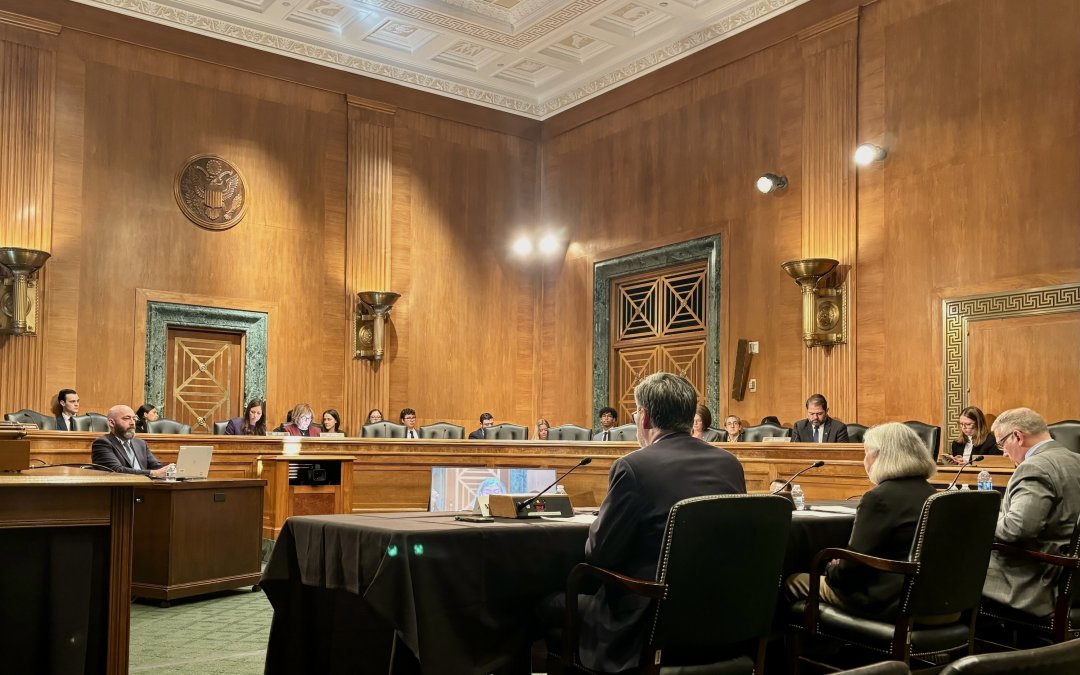WASHINGTON – As the federal government enters its second-longest shutdown in the nation’s history this week, the House of Representatives faces a growing workload when it is brought back in session — including consideration of the Senate-approved “ROAD to Housing Act,” a bipartisan package hailed as the most significant housing reform in a decade.
The Renewing Opportunity in the American Dream (ROAD) to Housing Act of 2025 draws from 27 previously introduced bills focused on boosting the supply of affordable housing. After clearing committee with unanimous support, the measure was folded into the Senate’s National Defense Authorization Act (NDAA) for Fiscal Year 2026, which passed on Oct. 9.
Discussion of housing reform continued in a Senate Banking, Housing, and Urban Affairs subcommittee hearing on Tuesday.
“Home ownership remains a foundational element to the American dream but, as we can see, is out of reach for so many,” Sen. Katie Britt (R-Ala.) said. “This is not a partisan issue. This affects families in Alabama and Minnesota and in every state across our great nation.”
Housing policy is usually left to states and localities, but because the affordability crisis is a national problem, it requires a national response, said Dennis Shea of the Bipartisan Policy Center. That means cooperation between federal, state and local governments as well as the private sector, he added.
The Act uses a few levers — a mix of “carrots” and “sticks” — to push state and local governments toward pro-housing policies, Shea said.
For example, it includes an Innovation Fund to encourage communities to expand housing through streamlined permitting, density bonuses and zoning changes. Another provision ties Community Development Block Grants in high-cost areas to housing production, with the risk that communities not producing housing would lose funds, according to the text of the bill.
“Solving the housing shortage is not about more bureaucracy. It’s not about spending more and more government subsidies. It’s about unleashing locally-driven solutions and cutting red tape while empowering builders and incentivizing private sector investment,” Britt said.
The Senate subcommittee elevated local solutions like weather-resistant homes in coastal Alabama and modular construction in Minnesota that have already proven cost effective.
“Building stronger, more resilient homes reduces the damage during disasters, fewer insurance claims and lower premium costs,” said Lars Powell, executive director of the Center for Risk and Insurance Research.
The witnesses stressed that the ROAD to Housing Act would enable many more communities to follow suit.
Although the Act already passed the Senate two weeks ago, Sen. Tina Smith (D-Minn.) told Medill News Service that the hearing keeps the ball rolling. As the legislation still needs to be reviewed by the House, the Senate hopes it remains in public focus.
The House passed its version of the NDAA without the housing provisions in September, so the two chambers will have to reconcile the differences once Speaker Mike Johnson brings the House back in session.
Shea said attaching the ROAD to Housing Act to a “must-pass” bill like the NDAA was strategic because Congress often aims to pass the defense bill by Thanksgiving. If the shutdown drags on and the House skips markups due to time constraints, he added, it’s possible that lawmakers pass the Senate version of the NDAA, leaving the ROAD to Housing Act intact.
“I know that this is a step in the right direction. We were able to pass it off at the Senate floor,” Smith said. “We need to continue to work to move that and other housing reforms forward so that we can fulfill the hope in this country — the fundamental freedom that people want to be able to own their own home.”


